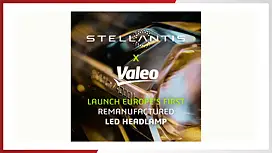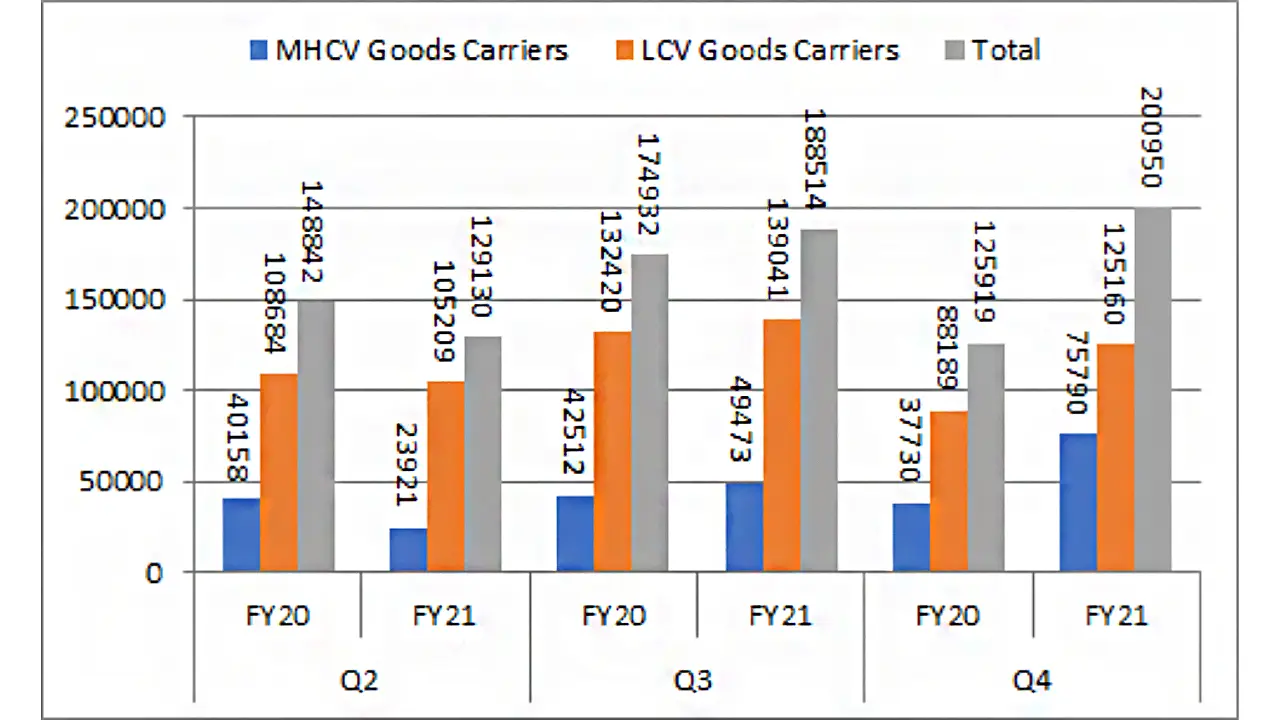
The Indian commercial vehicle (CV) segment declined 17% in FY 21, as it bore the brunt of the industry-wide impact of the COVID-19 pandemic and the economic slowdown. This came after an unfavourable FY20, when volumes came down by 45% with the revised axle norms in FY19.
Delay in road infrastructure projects after the elections, and financial issues scripted by IL&FS added fuel to fire. The issues that stemmed from these factors affected the entire CV sector in FY20, particularly the sub-segment long-haul. These problems spilt over to the following fiscal year also, primarily because of the additional carrying capacity after the new axle load norms.
Paradoxically, the freight rates did not increase with the additional payload, but the maintenance cost of the vehicles soared. Along with this, the fuel prices also went through the roof. Overall, the long-haul truck and the bus sub-segments were the worst victims.
The only exception for a few months in Q3 FY21 was the Intermediate & Light Commercial Vehicles (I&LCVs) of 7.5 tonne up to 16 tonne Gross Vehicle Weight (GVW). These classes of vehicles were in demand for first/ last-mile connectivity and daily trips, in addition to the 12-16 tonne GVW sub-segment.
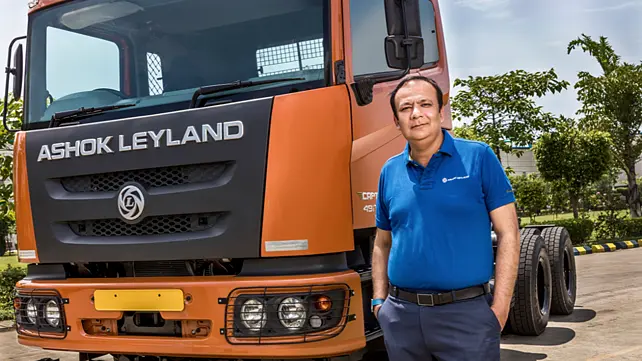
Anuj Kathuria, President and COO, Ashok Leyland, told Mobility Outlook that in March 2021, the Total Industry Volume (TIV) of trucks was good. Bus sales, however, did not recover. Within trucks, the tippers and Intermediate Commercial Vehicles (ICVs) stood out. Overall, the demand for I&LCV continued to be better than the rest, mainly because of outbound logistics, FMCG, white goods and e-commerce.
Sateesh Machiraju, Senior General Manager, Sales & Marketing, I&LCV, Tata Motors said the company had muted demand in the H1 FY21, with a healthy 46% market share in the I&LCV segment. This was followed by sequential growth, where the segment experienced a spike in demand in the post-lockdown period on the back of the flourishing e-commerce sector. Growth in the e-commerce sector was further accelerated in the last two quarters, when most buyers switched to online consumption due to the pandemic-induced restrictions.
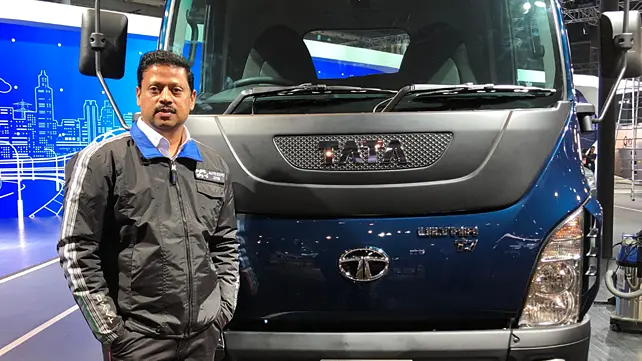
“Tata Motors achieved its highest-ever monthly sales numbers of 4,489 units in the ICV segment in March 2021, which happens to be the highest-ever number of units sold by any OEM in the segment. The feat was achieved on the back of superior product performance, wide range and the runaway success of the new-gen 3.3 litre engine,” Machiraju said.
The company has done well across the tonnage points, including the CNG models. ICV tippers, too, have shown strong growth, with an uptick in activity in the infra and construction sector, he added.
Rajaram Krishnamurthy, Vice President, Marketing & Sales and Customer Services, DICV said the company registered robust sales in the ICV segment since the launch of its flagship BS-VI products. “The e-commerce boom after the pandemic and shifting consumer preferences for online shopping have created the demand for ICV vehicles,” he said.
In H1 FY21, demand for I&LCVs was subdued due to the COVID-19 pandemic and the resultant nationwide lockdown. However, the segment witnessed a sequential growth in H2 FY21 driven majorly by e-commerce consumption. I&LCVs continued to contribute to the CV segment’s demand recovery on the back of improved consumer sentiments, robust rural economy, and increase in e-commerce demand. Tata Motors posted a YoY growth of 10% and 111% in Q3 FY21 and Q4 FY21, respectively, Machiraju said.
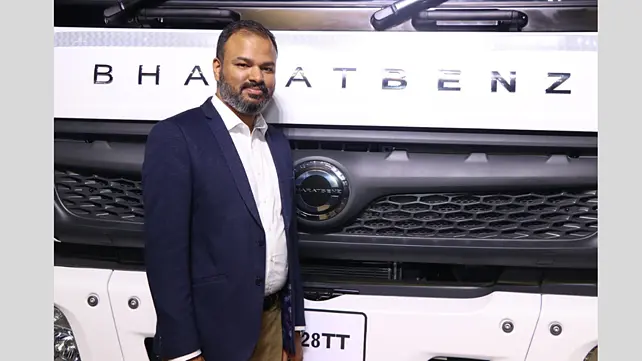
Growth Drivers
Kathuria said there was improvement month-on-month. In January 2021, the numbers had grown almost 30% more than in December 2020. “In ICV, we have gained market share. But still, there’s much work to be done. Within the ICVs, there are three sub-segments – eight to 10 tonne for shorter distances; 11-13 tonne for carrying market loads such as agri and poultry; 14-16 tonne, which are deployed in long distances carrying cement, LPG cylinders, parcels and garbage collections. All three segments have an equal share within ICVs,” he said.
Within the ICV segment, Ashok Leyland’s 1615 model in the 14-16 tonne bracket has become a star performer. In this particular segment, the company has over 50% market share of total industry volume. “This product is doing very well because it has the best-in-class fluid efficiency, which is the combination of fuel and AdBlue. It is about 10% more than the vehicles from other manufacturers. We have feedback from our customers saying that there is hardly any maintenance cost. We offer different kinds of the cabin to support specific requirements; having a sleeper cabin helps customers reduce the turnaround time, which is fastest in the segment,” Kathuria said.
According to Machiraju, the gradual unlocking of the economy along with a robust rural economy and thriving e-commerce sector catalysed the demand improvement for the I&LCV segment. The consumption from e-commerce has been one of the key drivers of the uptick in demand for the overall CV industry. The e-commerce sector has been growing on the virtue of structural changes, aggressive expansion by the new players, and continued demand improvement in household goods and consumer durables.
In addition to the recently-announced Scrappage policy, the pent-up replacement demand is expected to further boost the demand for CVs, including the I&LCV segment. Moreover, with the vaccination programme running at full steam, the demand for reefer trucks has also been contributing to the growth in the segment.
The demand for I&LCVs in the forthcoming quarters will be driven by increasing penetration of e-commerce in Tier 2 and Tier 3 towns, recovery in the utilisation of large industries and SMEs catering to these entities. The government’s Production-Linked Incentive (PLI) scheme will also play a positive role in spurring I&LCV demand.
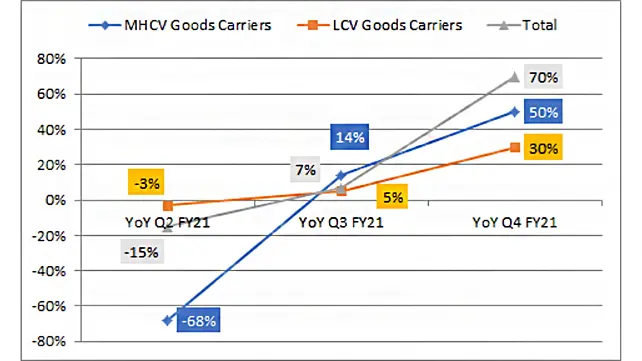
On the sellers’ side, traditional brick and mortar players are also branching out with their e-commerce platforms as this pandemic has brought about a permanent change in consumer behaviour and lifestyle.
The DICV official said the demand is coming from segments like construction and e-commerce. Given the current environment, people are increasingly switching to online buying for essential goods and even limited discretionary spending in lieu of the pandemic. “We have also seen support from towns and rural India as agriculture has done well last year. We also see a growing demand coming in from steel and cement sectors,” Krishnamurthy added.
Applications
The light and intermediate commercial vehicles of Tata Motors are widely used for intercity and intracity goods transportation. The company’s I&LCV trucks cater to a wide range of cargo applications, including transportation of FMCG and FMCD goods, industrial goods and white goods, LPG cylinders, pharmaceuticals and textile products, etc. Its state-of-the-art refrigerated trucks are used to transport medicines, and medical products, including the COVID-19 vaccine and food items such as eggs, milk, and fresh farm produce.
For newer applications like diesel bowsers and CNG cascade mounted vehicles, the company’s ICVs have been preferred by transporters and body builders because of the build quality and high fuel efficiency, claimed Machiraju. “We have also seen some traction in the intra-city cement distribution segment due to the restart of infrastructure development activities,” he added.
With the rising consumption and e-commerce boom, the demand for ICV trucks has been witnessing an uptick, Krishnamurthy said. ICV has an important role in cargo distribution needs such as e-commerce, fruits and vegetables, parcel and logistics, poultry, white goods, industrial goods, FMCG, auto parts, beverages, etc., he added.
Though there was an uptick for the ICV segment for few months in FY21, the demand seems unsustainable, considering the segment’s performance in the first month of this fiscal. Experts believe that this segment and the MHCVs will gain momentum from H2 FY22.
